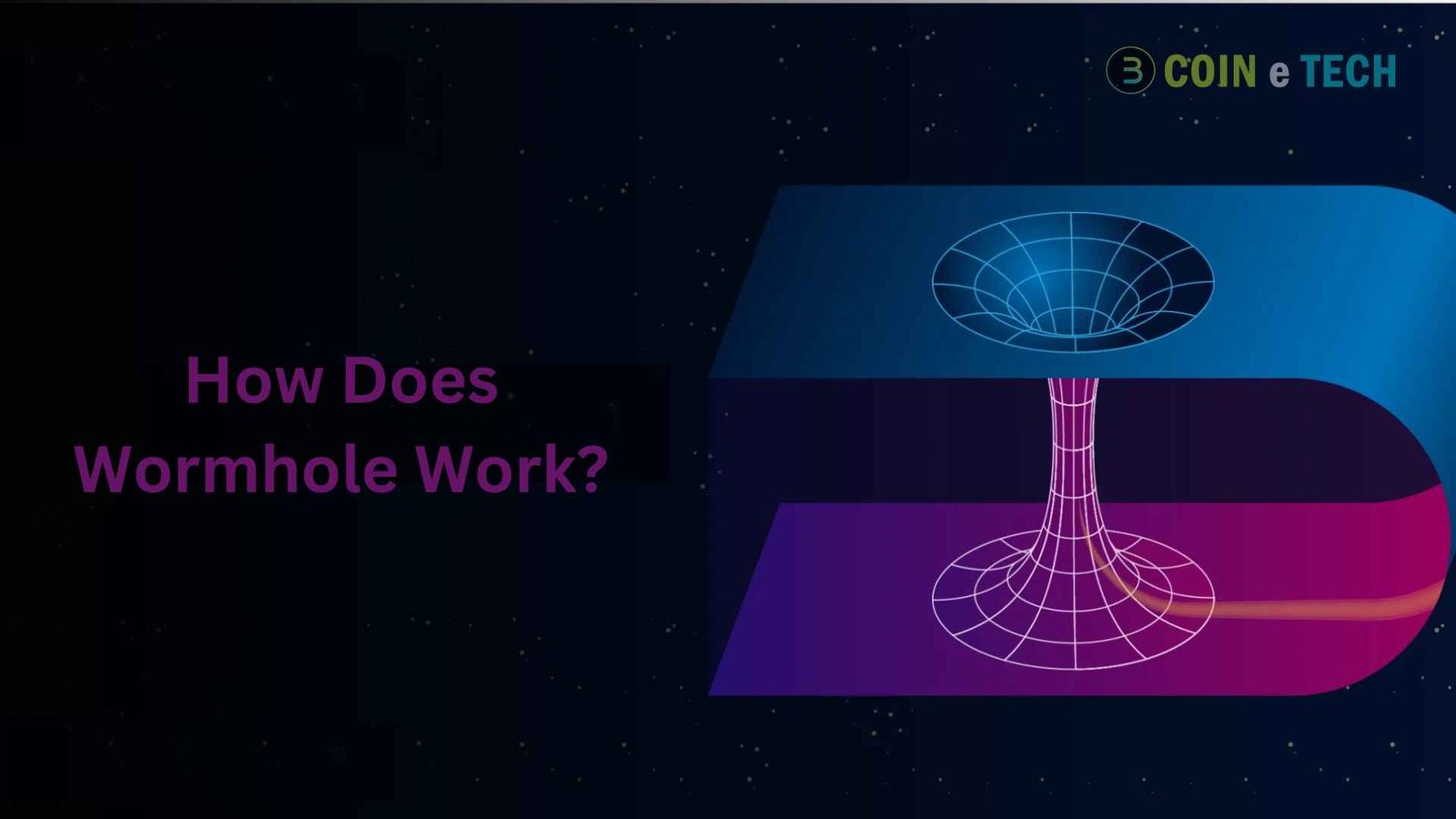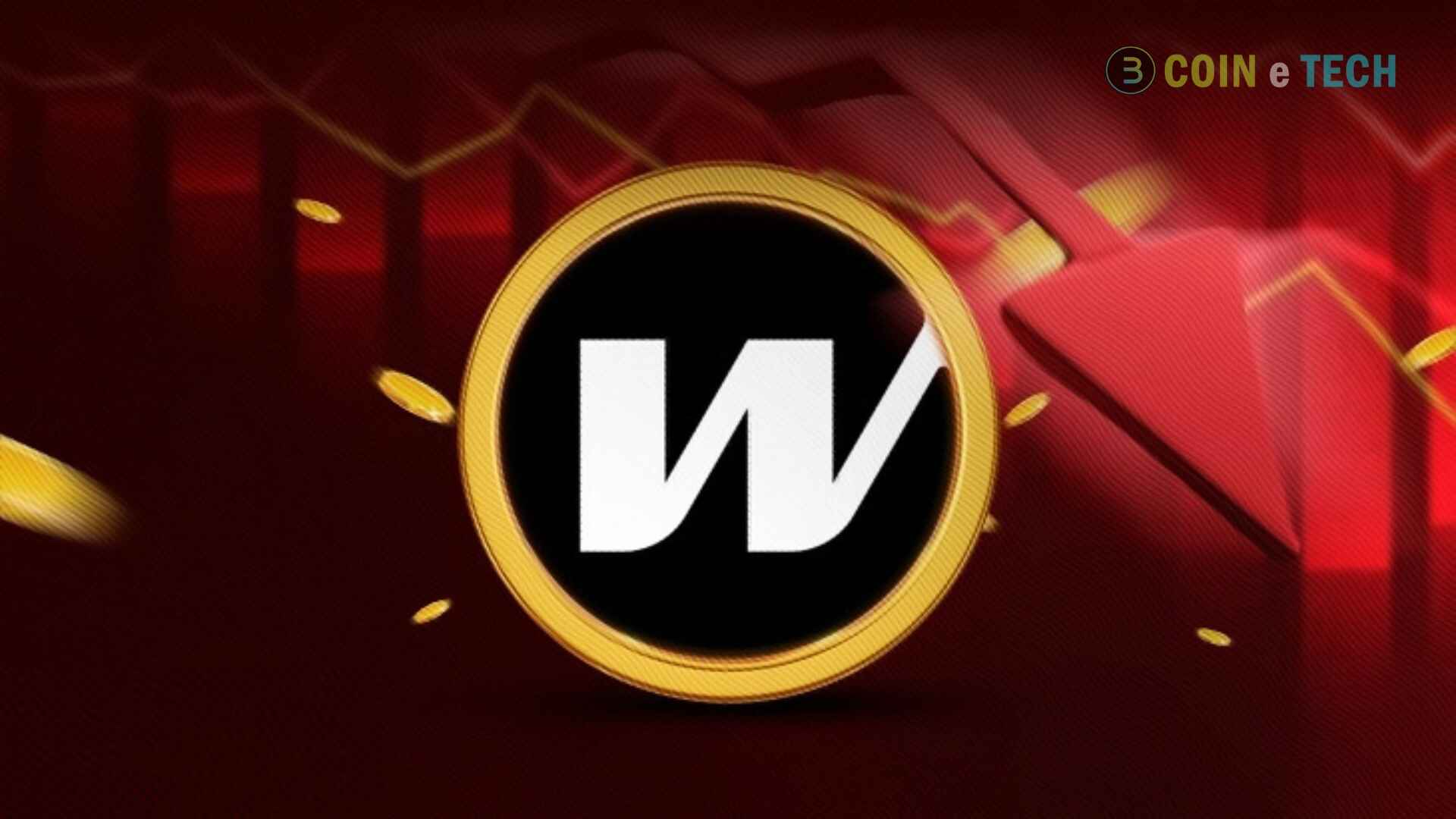Wormhole. A recent fundraising round for Wormhole brought around $225 million on November 29, 2023. With the year coming to a close, this landmark is already being hailed as the most significant cryptocurrency fundraising event of 2023. Wormhole is a distributed technology that allows different blockchains to communicate with each other. Among the 25 networks it supports are Solana, Near Protocol, Algorand, and significant EVM-compatible solutions.
While the protocol facilitates cryptocurrency transmission between networks, that is not its sole use case. Wormhole also facilitates the transfer of NFTs between blockchains and lets users utilize tokens from various chains to vote and participate in governance within DAOs.
Improved interactions with many protocols are one way Wormhole expands DeFi’s capabilities. Wormhole Gateway, an appchain built for specific applications within the Cosmos ecosystem, was launched in the summer of 2023, a noteworthy development.
How Does Wormhole Work?
In Wormhole, smart contracts are intermediaries users depend on for cross-chain transactions. Although these contracts ensure that the terms of the transaction will be fulfilled, there are security dangers that you must be aware of. Before moving tokens from one blockchain to another, users must send them to a smart contract on the original network. Afterward, a feature called “wrapping” is implemented via a smart contract on blockchain B, which generates an asset value that is 1:1 equivalent.
Tokens with a wrapper reflect the value of the underlying assets. If the value of one Bitcoin on the Bitcoin network is $38,000, then the value of one Wrapped Bitcoin on Ethereum would be $38,000 as well. By burning the WBTC on Ethereum, users can access the corresponding BTC on the Bitcoin network when they return wrapped tokens to their original assets. The wormhole works with this system. Wormhole goes above and beyond smart contracts by including a group of devoted validators called “Guardians.” Look at their function and other vital parts of Wormhole’s design.
Wormhole Architecture
Connecting with the emitter, a contract that posts messages on the core contract, is the first step in using Wormhole. Next, the core contract sends the message to the transaction logs with the sender’s details and an activity identifier. The Guardians sign messages once they have been logged. Among the nineteen members of the Guardian Network are prominent names like ChainodeTech, 01node, and Everstake.
An integral part of Wormhole’s protocol is the Guardian Network. Each supported blockchain has its guardians who check and verify messages the main contract sends. Because guardians must maintain a complete node for each blockchain in the ecosystem, they have high computing demands.
A smart contract secures a transaction and generates a VAA (Verifiable Action Approval) only after three-quarters of the guardians have put their signature on it. After guardians approve, the message is included in the VAA, which provides for sender and signed transaction information. Relayers are used to construct wrapped tokens and move the VAA to the final blockchain. There are three main categories of them:
- Client-Side Relaying: Here, users perform all actions, including transaction signing and fee payment, independently.
- Specialized Relayers: These relays perform particular parts of the process, facilitating task delegation. Calculation levels and fee payments can be transferred to Layer 2 (L2) solutions.
- Standard Relayers: This is Wormhole’s decentralized network of relays that transfer the VAA to the final blockchain.
The cost is paid in the network where the token creation occurs, which is the target blockchain. For instance, there is a minimum quantity of Ethereum required to move SOL from the Solana network to Ethereum. Standard relayers are capable of handling this issue. They use a necessary amount of the tokens locked in the first network and pay the fees in the second blockchain.
Wormhole Ecosystem Overview
Among Wormhole’s many uses is the facilitation of cross-chain bitcoin transfers, for which it is generally known. Among the existing options in the Wormhole ecology are:
- Wormhole Messaging: This is a web3 messaging protocol that assists in transferring data and asset value between blockchains. Being open-source allows developers to incorporate it into the development of decentralized applications.
- Wormhole Connect: A widget that directly integrates the cross-chain exchange protocol into decentralized applications (dApps).
- Wormhole Gateway: This is an application-specific blockchain powered by the Cosmos Software Development Kit (SDK) to enhance liquidity within the Cosmos ecosystem.
Portal is one of the most well-known projects that has used the Wormhole protocol. With a maximum TVL of $4.6 billion, the present Total Value Locked is $656.45 million. This decrease happened in May 2022, just before the UST crash.
Advantages of Wormhole
- Non-EVM Network Support. Wormhole is one of the few protocols enabling asset transfers between non-EVM and EVM-compatible blockchains. For example, it allows transferring APT from Aptos to Ethereum.
- Rigorous Validator Requirements. Wormhole uses a Proof-of-Authority network for validating transactions involving 19 validators. Each validator must operate a node in all the supported blockchains.
- Operational Efficiency. Thanks to relayers, Wormhole-based applications facilitate improved cross-chain exchange interactions. Users often experience reduced fees due to shifting computations to L2 solutions.
Potential Risks in Using Wormhole
- Smart Contract Vulnerabilities. Being a decentralized protocol, Wormhole’s fund security depends on the robustness of its smart contracts. A notable hacking incident in February 2022, resulting in a $320 million asset theft, underscores potential vulnerabilities. Although $225 million was recovered, it points to possible weaknesses in the smart contract architecture.
- Risk of Centralization. Despite the necessity of having 19 guardians for decentralization, their collective functioning could inadvertently lead to protocol centralization.
- Regulatory Concerns. Wormhole’s presence in the DeFi sector attracts regulatory scrutiny. Increased regulatory interventions could potentially affect the protocol’s operations.
Future of Wormhole
Obtaining $225 million in finance, especially during a bear market, is a significant sign of the project’s potential. Beyond this financial milestone, however, several variables will determine Wormhole’s future success. Considerations such as user enthusiasm and confidence, general market attitude, and rivalry in the cross-chain solutions industry are crucial.
One alternate mechanism for transferring assets between blockchains, LayerZero, has recently received interest. It is difficult to say whether this will be a major competitive landscape or who will become the leader in this field. You should always DYOR!
Also Read: What Is Financial Freedom? An Ultimate Guide By Coinindesk






